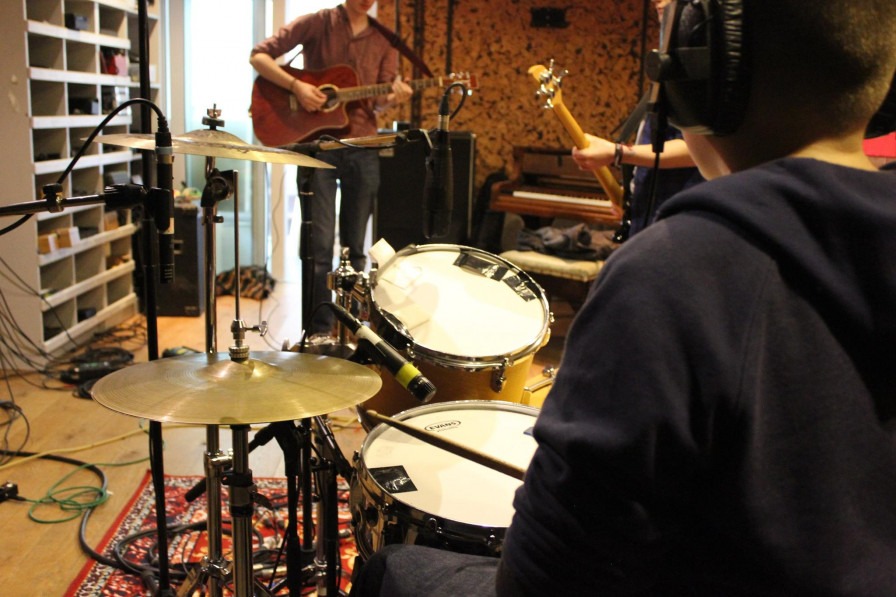123, 223, CPD!

123, 223, CPD!
What’s up! Long time no speak, eh? Turns out the world of youth music moves pretty darn swiftly when your projects begin to stack!
Anyhoo, one of the many benefits of being Youth Music Assistant is getting the opportunity and privilege to meet and learn from some truly outstanding musicians as we cross paths- and hoo boy dear reader, these past few months have really been something special.
Way back in November we had the pleasure of hosting renowned and much storied percussionist Jon Hardeman for several days of workshops and cultural exchange as he taught us about the importance of rhythm and song in the Candomblé religion. Jon himself was initiated in to Candomblé some years ago, (whilst drumming with a broken back!) and is one of the UK’s foremost authorities on Brazils diverse connections between percussion and culture. Needless to say his workshops went down a storm, with the vast majority of participants leaving with not only more cultural context for the music they’ve been performing, but a drive to learn even more. My colleagues Laura and Henry along with myself got the opportunity to have a short 1-3 musical development session with Jon in which we learnt some seriously great rhythmic changes and grooves related to samba funk that we’ve since included in our broader repertoire and teaching.
Skipping forward a little to February 2018 we welcomed Rapasa Nyatrapasa Rapwapwa, a Nyatiti (A harp-like pentatonic instrument from the Luo tribe) and storytelling master from Western Kenya to the Jack Drum Arts space. We learnt a vast amount across the afternoon, from the origins of the instruments, their associated tribes, the tuning systems, the concept of inherited techniques and where these things intersect with our knowledge of western music. Members of Cuttlefish Orchestra also got to benefit from this session, as we lead straight in to another workshop with Rapasa, combining his knowledge of melody and rhythm with our eccentric approach to songwriting in an incredible jam session- putting what he taught us to the test.
When I think of the phrase “Drum machine”, I’m instantly in the mind of 4 to the floor heavy dance beats with a sidechained compressor on the bass and kick drum. Real punchy stuff. Now imagine that vibe, but on the samba batteria. That’s what UK based Samba leader Adrian Todd sought to do when he started out forming Drum Machine – a samba band formed of traditional samba instrumentation, playing contemporary dance rhythms. It was intensely successful. Adrian came to work with us for 2 days with the workshops being open to the community, providing us with tools not only to learn the new rhythms he brought with him, but also tools that would allow us to write our own rhythms and implement them in our performances. We used a beat map (similar to a GM map in a digital audio workstation) to break down 2 bars in to 8th and 16th notes, placing markers in the grid where beats would occur. Since those workshops we’ve already incorporated 2 entirely original rhythms in to our gigging set list with Runaway Samba with 3 more also on the way.
Finally, but by no means least, I benefitted from an incredible half day CPD session with my Youth Music mentor Ziad Jabero of the Baghdaddies. We focused on songwriting skills and workshop techniques for an upcoming workshop, inclusive of reading the room, which games can inform how a session progresses as well as a variety of imposed parameters-based lyric writing strategies to be incorporated in future workshops. Following this we got deep down in to developing a more knowledgeable approach to music theory to advance what I can provide as a facilitator to our Youth Music Collective. Topics covered included various approaches to playing time signatures based on bars of 9, 11, 13 and beyond, modal theory and it’s application throughout various chord progressions, variations on the core modes to simulate microtonal scales, making a polyrhythmic groove that people can dance to and younger musicians can understand, diminished scales and their functions beyond their home keys and much, much more.
This blog was far more difficult to write than I anticipated purely based on the sheer volume of incredible artists we've gotten to work with, and I'm looking forward to meeting even more in the coming months.
